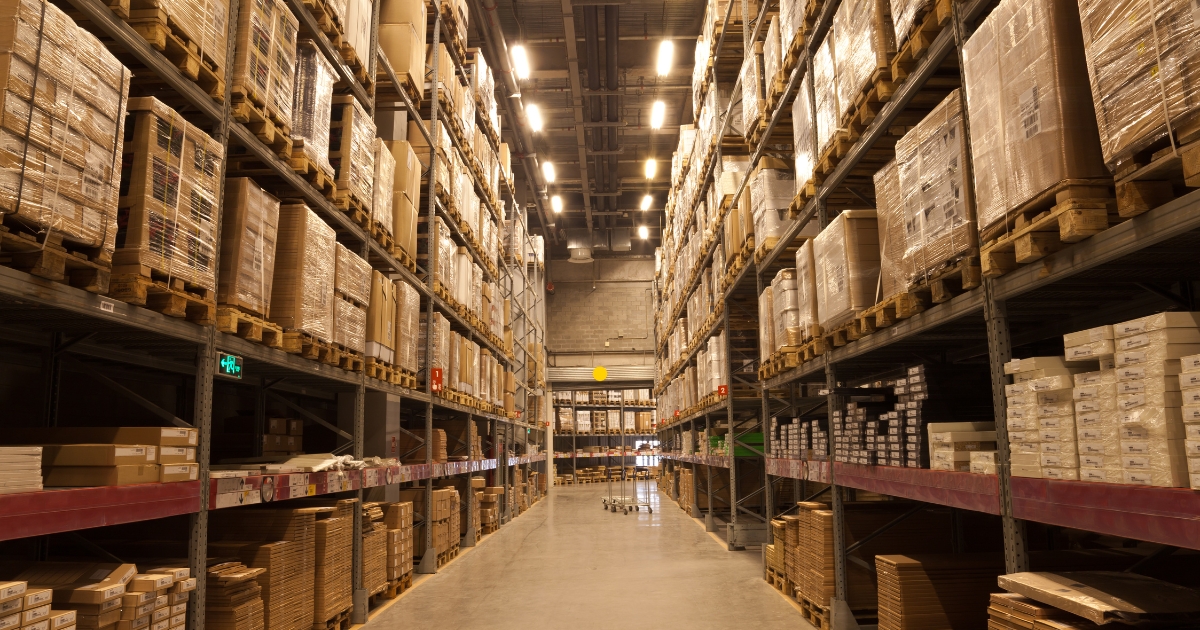Walk into any major distribution center during peak season and the scale becomes immediately apparent. Thousands of pallets move through the facility daily, each one needing to reach its destination intact and on schedule. The difference between warehouses that thrive under this pressure and those that buckle comes down to systems, equipment, and processes most people never see.
High-volume shipping isn’t just about moving more product faster. It’s about maintaining consistency when processing hundreds or thousands of orders while keeping error rates low and damage claims minimal. The warehouses that manage this successfully have figured out something important: speed without reliability creates more problems than it solves.
The Foundation: Receiving and Inventory Control
Everything starts at the receiving dock. In facilities handling serious volume, incoming shipments get processed within hours, not days. This requires scanning systems that capture product data instantly and integration with warehouse management software that assigns storage locations automatically. The goal is getting products from the truck to their designated spot without paperwork bottlenecks or manual data entry delays.
Smart warehouses use zone-based storage strategies that place fast-moving items closer to packing stations. This reduces travel time for pickers and keeps the most active products circulating efficiently. Slower-moving inventory gets pushed to outer zones where retrieval time matters less. This sounds obvious, but plenty of warehouses still use random storage that treats every product equally, creating unnecessary movement and wasted time.
Inventory accuracy becomes critical at scale. When a facility ships 5,000 orders daily, even a 2% error rate means 100 mistakes going out the door. Modern operations use cycle counting programs that verify inventory continuously rather than relying on annual physical counts. Automated systems flag discrepancies immediately, allowing staff to investigate and correct issues before they compound.
Picking Strategies That Actually Scale
Order picking represents the most labor-intensive part of warehouse operations, which is why high-volume facilities obsess over optimization here. The traditional model of one person picking one complete order works fine for small operations but falls apart at scale. Large warehouses use zone picking, where workers handle only their assigned area, or batch picking, where one person gathers items for multiple orders simultaneously.
Wave picking takes this further by grouping orders with similar characteristics and processing them together. A warehouse might create waves based on shipping carriers, delivery zones, or order urgency. This approach reduces congestion in aisles and allows better coordination between picking and packing stations.
Voice-directed picking systems have gained traction in facilities handling significant volume. Workers wear headsets that tell them exactly where to go and what to pick, leaving their hands free and their eyes focused on products rather than paper lists or handheld screens. The technology isn’t cheap, but facilities report accuracy improvements and faster training times for new employees.
Securing Loads for the Journey Ahead
Here’s where many warehouses stumble. Getting products picked and packed correctly matters little if loads shift during transport, causing damage before they reach customers. High-volume operations can’t afford to hand-wrap every pallet when hundreds need processing each hour.
Automated load securing becomes essential at this scale. A quality pallet wrapping machine handles the repetitive work of applying stretch film consistently around loads, freeing workers for tasks that actually require human judgment. These machines maintain uniform tension and proper overlap patterns that manual wrapping rarely achieves, especially during long shifts when fatigue sets in.
The containment force applied by these systems keeps products stable through the roughest parts of their journey. Pallets get loaded and unloaded multiple times, experience vibration during transport, and sometimes face aggressive handling at cross-dock facilities. Loads wrapped properly survive this treatment. Those wrapped poorly show up damaged, triggering claims, customer complaints, and lost revenue.
Film pre-stretch technology in modern wrapping equipment reduces material costs while improving load holding strength. The machine stretches film before applying it to the pallet, meaning less film achieves better results. For facilities wrapping thousands of pallets monthly, this translates to measurable savings without sacrificing performance.
The Shipping Dock Orchestration
The final stage requires precise timing. High-volume warehouses schedule carrier pickups throughout the day rather than creating a rush at day’s end. This spreads the workload and reduces dock congestion. Staging areas near dock doors hold orders grouped by carrier, with staff moving completed pallets directly to the correct zone.
Dock management systems track which carriers are on-site, which doors are occupied, and which shipments are ready for loading. This visibility prevents the chaos that happens when multiple trucks arrive simultaneously and everyone scrambles to figure out what goes where. The best facilities treat their dock like air traffic control, with real-time coordination keeping everything moving smoothly.
Technology integration across all these stages creates the compound effect that separates elite operations from average ones. When receiving systems talk to warehouse management software, which connects to picking technology, which feeds into shipping systems, the entire process flows with minimal friction. Information moves as fast as products, allowing managers to spot problems quickly and adjust in real time.
Continuous Improvement Without the Buzzwords
Warehouses handling serious volume don’t achieve efficiency once and call it done. They measure everything: pick rates, accuracy percentages, damage claims, carrier performance, equipment uptime. This data reveals bottlenecks and opportunities that gut feelings miss.
The facilities that excel review metrics daily and make small adjustments constantly rather than waiting for major problems to force big changes. Maybe one zone consistently shows slower pick times, suggesting layout issues or training gaps. Perhaps damage claims spike with a particular carrier, indicating handling problems or inadequate securing methods. Small fixes compound over time into significant performance gains.
Labor management also evolves in high-volume environments. Cross-training workers across multiple functions creates flexibility when volume spikes hit specific areas. Someone trained in receiving, picking, and packing can shift to wherever demand is highest rather than standing idle in a slow zone while another area gets overwhelmed.
The Reality of Scale
Processing thousands of shipments daily requires infrastructure, technology, and processes that small operations don’t need. But the principles remain consistent: reduce unnecessary movement, maintain accuracy, protect products during transport, and coordinate timing across all stages. Warehouses that master these fundamentals while investing in appropriate automation handle volume surges without the chaos that smaller, less organized facilities experience during their busy seasons.
The operations that look effortless from the outside represent years of refinement, equipment investment, and process optimization. There’s no single solution that transforms warehouse performance overnight. It’s the accumulation of smart decisions across dozens of operational areas that creates facilities capable of processing massive volume reliably, day after day.










